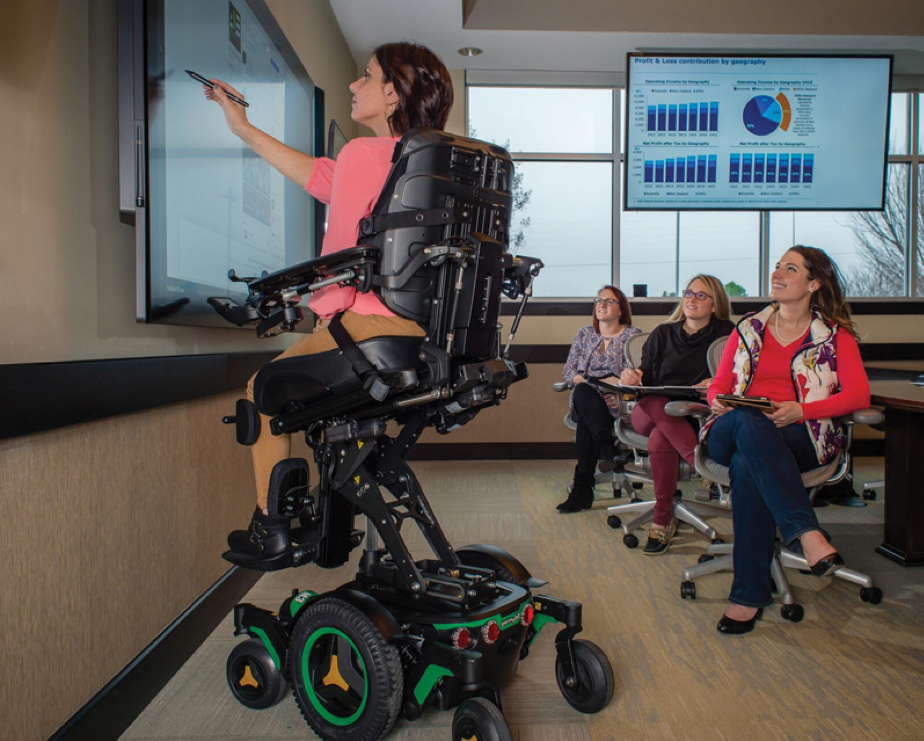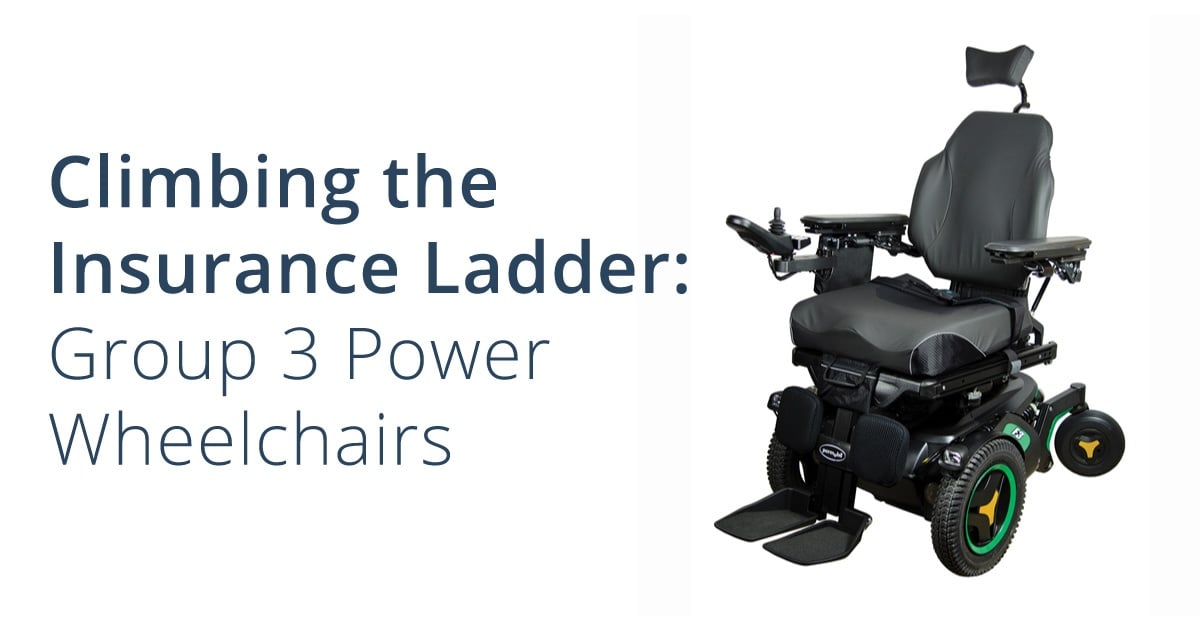Part 17 in our series A to Z Considerations for Seating & Wheeled Mobility: A Quick Reference Clarifying Confusion Around CRT. See Part 1, Part 2, Part 3, Part 4, Part 5, Part 6, Part 7, Part 8, Part 9, Part 10, Part 11, Part 12, Part 13, Part 14, Part 15, Part 16, Part 17, Part 18, and Part 19.
Last week, we wrapped up our discussion of a general look at Group 2 power wheelchairs and who may qualify for this type of power mobility device. This week, we continue to “climb” the ladder to the next rung: Group 3 power wheelchairs.
 Under Medicare guidelines, in order to qualify for a Group 3 power wheelchair, the client must have: a neurological diagnosis, myopathy, or a congenital skeletal deformity.
Under Medicare guidelines, in order to qualify for a Group 3 power wheelchair, the client must have: a neurological diagnosis, myopathy, or a congenital skeletal deformity.
|
*TIP: Although these are Medicare’s guidelines, remember to always fight for what you feel actually meets your patient’s needs and provides the greatest level of independence. Certainly, your request for a higher-level base will not always get approved, but, if you document the need very well, it CAN get approved. Also, I have had great success with private insurance getting the higher-level chair approved through proper justification and documentation. |
Common Diagnoses for Group 3 Power Wheelchair:
- Spinal Cord Injury
- Traumatic Brain Injury
- Stroke with Hemiplegia
- Multiple Sclerosis
- Progressed Parkinson’s
- ALS
- Cerebral Palsy
- Muscular Dystrophy
- Osteogenesis Imperfecta
So, what exactly makes a Group 3 power wheelchair different from a Group 2 chair?
Group 3 power wheelchairs requirements and attributes:
- Require both the involvement and assessment of a PT/OT as well as a RESNA certified assistive technology professional (ATP) in ADDITION to the written order and justification from a referring physician.
- Have larger batteries that are meant to last all day before needing to be charged, a bonus for active users who rely solely on this device as their means of mobility.
- Offer higher speeds (up to 6 mph) for improved community access and navigation.
- Bases have improved suspension and are intended for clients who require this device for both indoor and outdoor use. The improved suspension allows improved security and decreased risk of the chair “tipping” on uneven terrain and ramps, reduces driving fatigue by providing a smoother ride, and decreases the risk of spasms and tone triggered by vibrations and unwanted movement within the chair itself.
- Have much improved climbing capability in order to safely navigate thresholds, curbs, and other obstacles both indoors and out.
- Increased electronics capabilities with the ability to accommodate as many power seat functions as your client needs for functional independence, skin management, and safety, i.e. power tilt, power recline, power elevating leg rests, and power elevate/power adjustable seat height.
- The ability to interface with any type of alternative drive control, i.e. head-array or sip-and-puff.
- The ability to program different drive profiles based on varying environments to ensure optimal performance within each environment regularly navigated by your client.
- Available in mid-, front-, and rear-wheel drive options.
- Certain manufactures offer additional power seat options such as power elevate/power adjustable seat height (up to 12”), anterior tilt (up to 20 degrees), and ActiveReach (trademarked under Permobil, which is a combination of power seat elevation WITH anterior tilt to improve access to the environment, i.e. reaching into cabinets, assisting with transfers, or reaching forward to work at a desk or cook on a stove top).
 Active Reach on Group 3 Chair
Active Reach on Group 3 Chair
In a later post, we will discuss the various power options on chairs and when/why these may be appropriate for our clients!
|
*TIP: If the client does not currently need these additional features, a Group 3 base can be ordered with “expandable electronics” so these items can be added down the road, if needed. However, remember that the chair is intended to last approximately 5 years. So, if you anticipate that your client will need these additional features within the lifetime of the chair, go ahead and request and justify the need for them NOW! |
Also, Permobil, specifically, is now offering additional technology tools on Group 3 power wheelchairs to improve the quality of life for the end-user such as:
- Fleet Management is a technology that allows dealers and manufacturers to assess any issues with the chair without actually having to look at the chair in person. This way dealers only have to make a single trip to the client to repair the actual issue!
- MyPermobil App empowers you to do more and go further by sending real-time power wheelchair insights directly to your smartphone. Stay informed and feel confident as you get the most out of your Permobil power wheelchair.
FINALLY, we reached the top of the ladder and have completed our discussion of the available options for Medicare beneficiaries! However, some private insurers, as well as the VA, will provide up to Group 4 power wheelchair bases. Next week, we will conduct a brief overview of Group 4 power wheelchairs. I hope to see you then!

Lindsey Sharpe, PT, DPT
Lindsey Sharpe graduated with a BA in Exercise and Sport Science from the University of North Carolina at Chapel Hill in 2007 and with her Doctor of Physical Therapy from Elon University in 2010. Lindsey was a practicing clinician for seven years primarily focusing on neurological conditions and wheelchair seating and positioning.
Lindsey was first introduced to wheelchair seating and positioning during her time on the spinal cord injury team at the University of Virginia's acute rehab hospital where she discovered her interest in and passion for this niche in the therapy world. Lindsey went on to open a brand-new seating clinic with Carolinas Healthcare System in Concord, NC where she advanced her knowledge and skills performing both inpatient and outpatient seating evaluations for clients of all ages having a variety of diagnoses.
